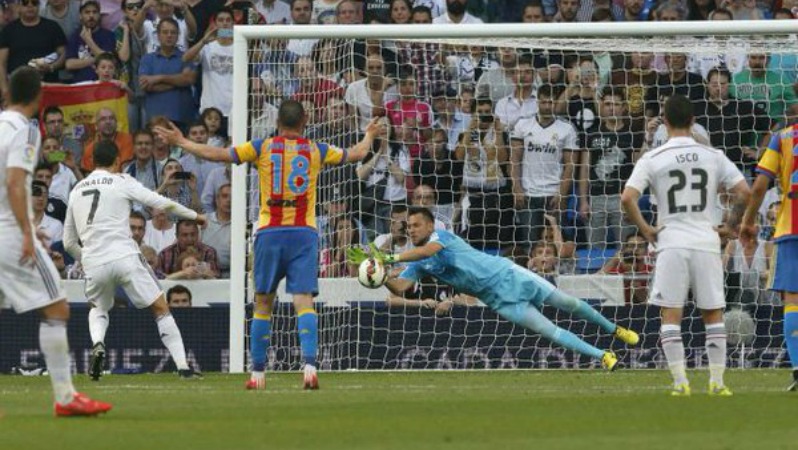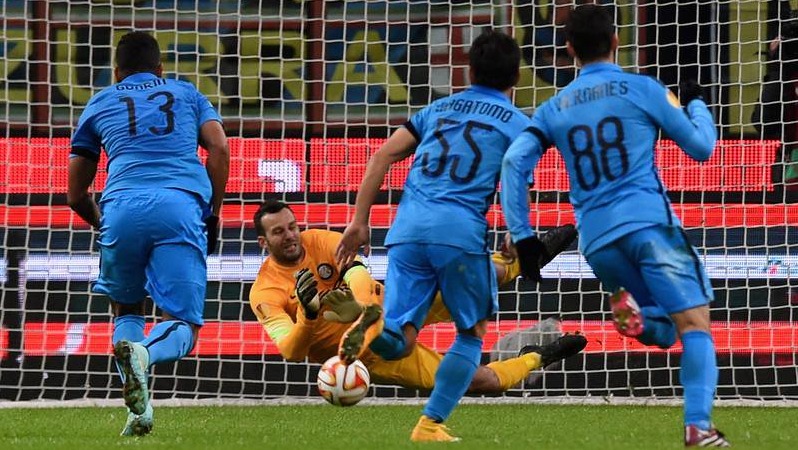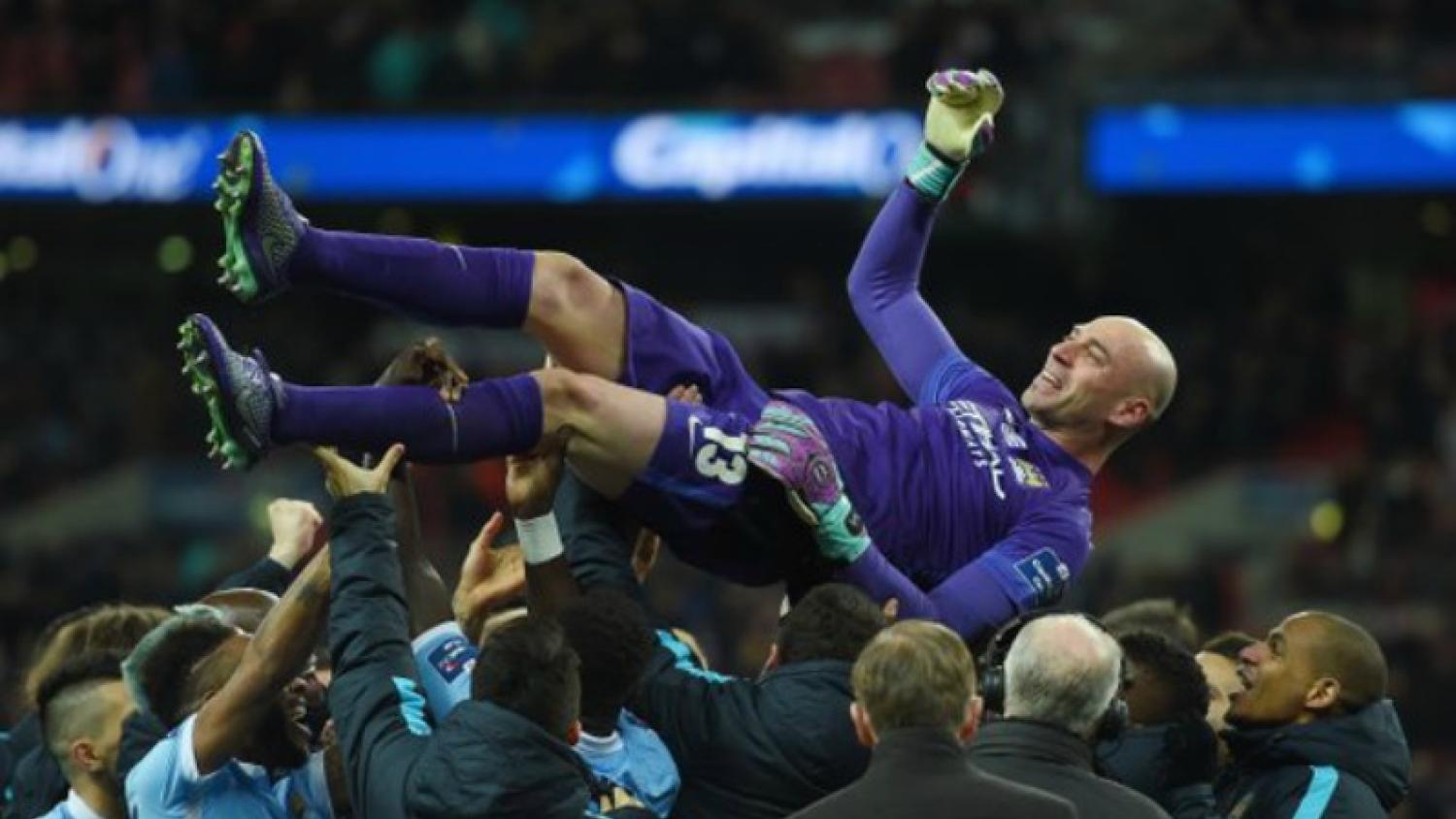If you are a soccer fan, the odds are that, at some point, you’ve heard someone say, “saving penalties is a lottery.” But, is it really?
Wilfredo Caballero saved three shots from the mark last weekend, giving Manchester City the Capital One Cup title in a shootout, was that luck, or is there a science behind stopping penalty kicks?
You can bet there is.
First of all, let’s think back in history. Many goalkeepers have made a name for themselves as specialists in stopping penalties.
Most recently, a notorious man penalty takers fear is Valencia’s goalkeeper, Diego Alves.

Not even Cristiano Ronaldo escaped Alves. Photo: @24horas_deporte | Twitter
Not even Cristiano Ronaldo escaped Alves.
Alves’s penalty-saving record is nothing short of unbelievable. As of the beginning of 2015, Alves has stopped almost half of the penalties he has seen in his career: he has faced 39 penalties and stopped 20 of them according to Sportskeeda.
Internazionale’s Samir Handanovič is equally feared by opposing strikers. The 6’5" Slovenian goalkeeper has 26 penalty kick saves in 57 attempts, giving Inter’s keeper a success rate of roughly 45 percent.

Handanovič is another penalty-stopping machine. Photo: @Tripletista | Twitter
Many other goalkeepers have astounding numbers when it comes to saving penalties, and their track records intimidate strikers. So, what separates these goalkeepers from the rest of the bunch?
According to Believe Perform’s James Barraclough two factors separate the good penalty-saving goalkeeper from the corner-guessing amateurs: reading and predicting.
Much more like a professional poker player anticipating his opponent’s next move, rather than a psychic reading your palms, expert goalkeepers concentrate on reading the body language of the striker instead of guessing where the ball is going.
Now, what do these goalkeepers look at to predict where the striker wants to place the ball? The standard answer here would be watch for where the penalty taker is looking. Well, in today’s soccer world, this tactic doesn’t work very often.
According to Barraclough, there are two factors goalkeepers should pay attention to in order to save a penalty kick: “the position of hips, kicking leg and trunk (the angle of the kicking foot to the ball on the ‘downswing’ should show its trajectory) just before and during contact,” and “the orientation of the non-kicking foot just before and during contact.”
Similar to basketball, where in which you pay attention to the center of gravity of the dribbler instead of the ball, the rest of the player’s body can’t go anywhere without his center of gravity moving. When kicking a penalty kick, the striker's foot plays a similar role to the ball handler's center of gravity in helping predict where the ball is going.
Of course, there are times when saving a penalty is just impossible.
Nonetheless, more often than not all it takes is observation and a little patience. Just look at how Diego Alves does it:
Before the striker even hits the ball, the Valencia goalkeeper is already moving towards the side the ball is going even when the man on the other side is Lionel Messi.
What do you think? Is saving penalties a matter of luck or science? Let us know in the comment section.

 Home
Home
